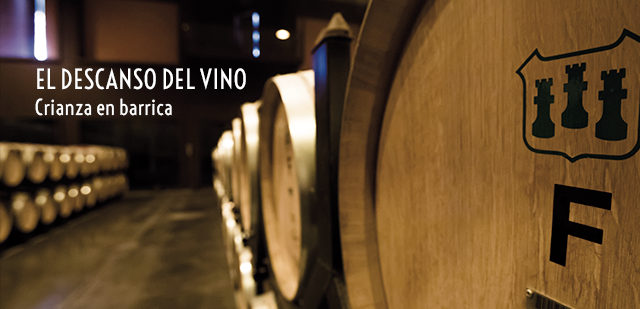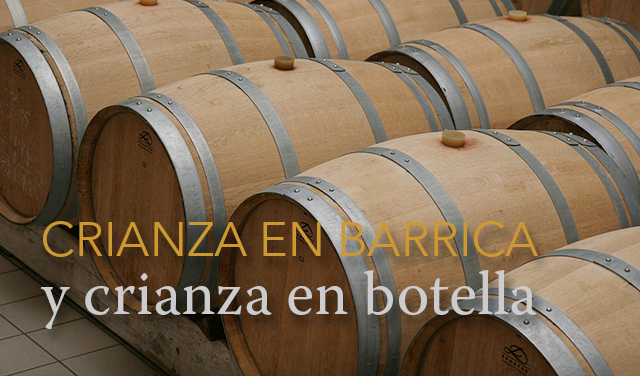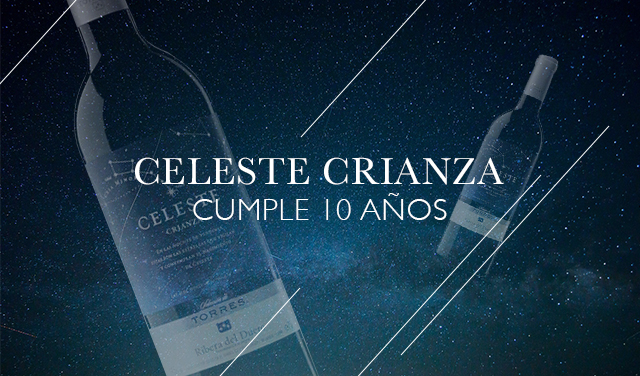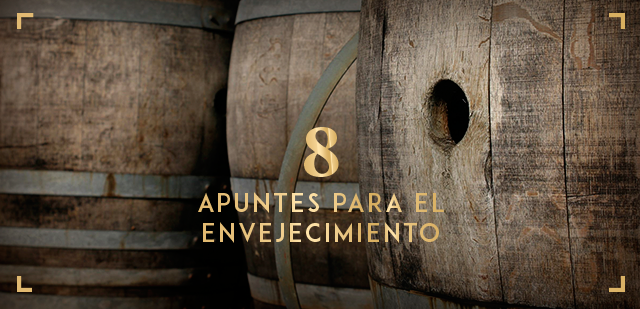WINE IN REPOSE

After fermentation, the wine rests in the cellar in perfect symbiosis with the oak. Time and silence bear witness to a gradual transformation. Tannins become rounder, more refined, while aromas and flavors gain complexity.
Making a good wine is an undeniable art. It involves a lot of people and a lot of factors. On this exciting journey, nothing happens by chance; there is a reason for everything. Behind every step and every choice is the skilled hand of the winemaker who, like an artist, gradually adds the precise strokes to achieve the envisioned artwork.
[[{"fid":"9176","view_mode":"default","fields":{"format":"default","field_file_image_alt_text[und][0][value]":false,"field_file_image_title_text[und][0][value]":false},"type":"media","link_text":null,"attributes":{"height":1575,"width":2362,"style":"width: 500px; height: 333px;","class":"media-element file-default"}}]]
The new vinification hall at Mas La Plana
But enologists don't work alone. They rely on a team that interprets their vision of what the wine should be, with its own characteristics and particular idiosyncrasy. In this issue of Vendimia, we take an in-depth look at the aging process, which begins once the wine has completed fermentation. Enologist Montse Catasús and cellar master Salvador Ferrer, both from Bodegas Torres, share their secrets with us.
During weekly tastings, the Torres family makes decisions on the future of the wines that bear their name.
[[{"fid":"9177","view_mode":"default","fields":{"format":"default","field_file_image_alt_text[und][0][value]":false,"field_file_image_title_text[und][0][value]":false},"type":"media","link_text":null,"attributes":{"height":3328,"width":4992,"style":"width: 500px; height: 333px;","class":"media-element file-default"}}]]
Every week, the winemaking team and the Torres family taste the wines to ensure their optimal evolution and decide on the next steps
Giving the wines roundness and finesse
The purpose of barrel aging is to give the recently fermented wine roundness and finesse. In contact with the wood, the wine develops structure and aromatic complexity, which not only builds character, but also longevity. In order to benefit from aging, the wine needs a good amount of alcohol, plenty of polyphenols and good acidity. All of these factors are conditioned by the harvest, the winemaking process and the grape variety.
Bodegas Torres uses 225-liter and 300-liter barrels to age its wines, depending on the style and variety. Once filled, the barrels are brought to the barrel hall and arranged in overlapping rows, one on top of the other. The surroundings provide each barrel with the right conditions for slow consistent aging: stable 75% humidity and a temperature of 17°C. “The temperature and humidity are adjusted according to the needs of the wine, which the enologists determine during their regular tastings,” explains Salvador Ferrer.
[[{"fid":"9178","view_mode":"default","fields":{"format":"default","field_file_image_alt_text[und][0][value]":false,"field_file_image_title_text[und][0][value]":false},"type":"media","link_text":null,"attributes":{"height":1575,"width":2362,"style":"width: 500px; height: 333px;","class":"media-element file-default"}}]]
Salvador Ferrer oversees Torres's barrel halls and cellars
The work carried out during the aging process is decisive. The team monitors the barrels to prevent wine from evaporating. Industry professionals call this the “angels' share.” A poetic turn of phrase for a seemingly magical process.
During barrel aging, the tiny pores in the wood slowly and gently oxygenate the wine. Once inside, the oxygen dissolves and melds with the wine compounds. This makes the choice of barrel so important.
The enologists select the most appropriate type of barrel for each wine. “Every cooperage provides something different,” explains Montse Catasús, “and we know what works best for us in any given situation.”
The purpose of oak aging is to give the wine the aromatic complexity that will define its character.
Choosing the barrel
In making their barrel selection, winemakers consider two key factors that will have a decisive impact on the wine's character: grain and toast level.
As far as grain goes, the choice is always fine-grained wood, because it adds aromatic richness without making the wine seem coarse.
The toast level, however, is one of the most significant decisions, because it alters the wood compounds in ways that will affect the wine differently:
- A light level of toast imparts more tannins and increases the oak influence on the wine.
- A medium level of toast exerts less oak influence on the wine, which in turn gains balance and complexity.
- A heavy toast level means a significant loss of wood tannins and changes in the aroma families.
- Finally, a very heavy toast imparts less overall aromatic intensity due to changes in the composition of the wood..
In short, as Salvador Ferrer says, “Wine is alive and will react differently depending on how you treat it.”
And to make sure it evolves well—taking on the desired color, aroma and flavor—the enologists taste and analyze the wine frequently. Torres has opted for a specialized winemaking team with each enologist only working on two or three wines. According to Montse Catasús:
“For us, tasting is more important than lab tests, because it gives us information that is impossible to obtain otherwise.”
[[{"fid":"9179","view_mode":"default","fields":{"format":"default","field_file_image_alt_text[und][0][value]":false,"field_file_image_title_text[und][0][value]":false},"type":"media","link_text":null,"attributes":{"height":1575,"width":2362,"style":"width: 500px; height: 333px;","class":"media-element file-default"}}]]
Enologist Montse Catasús tastes one of the wines aging in the Waltraud barrel hall
Besides red grapes, certain white varieties, like Chardonnay or Sauvignon Blanc, have the kind of structure that yields excellent oak-aged wines. In aging white wines, the goal is to build complexity and find the right balance between fruit aromas and those imparted by either lees or oak aging. The wine undergoes changes, which enhance the richness of its aromas and flavors.
Whether reds or whites, barrel aging is an art that treats the wines with utmost care to ensure an outstanding result.
The barrel: where wine is transformed
Barrel aging allows great wines to express their richness, suppleness, roundness and finesse. This act of alchemy depends largely on the initial quality of the wine. The choice of wood imparts aromatic characteristics, as well as softening tannins and stabilizing color.
In the past, winemakers barrel aged their wine in a wide variety of wood: acacia, beech, poplar, chestnut or cherry. In Spain, coopers occasionally used cherry or chestnut, even elm. Over time, however, winemakers came to the conclusion that oak was the only suitable wood. There are reasons why oak barrels are the preferred choice: the wood is hard, impermeable and water-tight; it rarely develops mold; it contributes more interesting aromas than other types of wood; and coopers find that oak offers the best mechanical properties, given that it is flexible and easy to handle.



